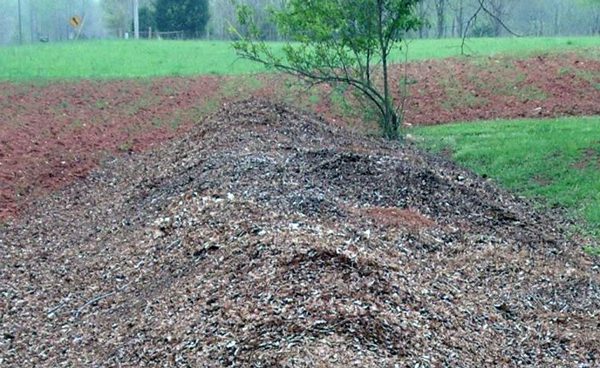Turn your leaf piles into mulch or compost

Despite the popularity of trampolines and bouncy castles, kids still love to frolic in a good old-fashioned leaf pile. A solid mound turns out to be delightfully springy. There’s plenty of room to hide. Armloads of leaves are virtually weightless. Thrown into the air, they spiral slowly back to earth. As adults, we start to see leaf piles not as things of wonder but as heaps of drudgery. They speak of back-breaking rakes and ear-splitting blowers. After working to collect the leaves, some people still do the unthinkable – they set the piles on fire.
With just a little more time and effort, those leaves can pay big dividends. Homemade compost and mulch are priceless additions to your garden, providing winter protection, moisture retention and soil amendment. Once you have a pile of leaves, take a few minutes to assess them. Are they a mix of common front-yard trees such as dogwood, maple, crape myrtle and birch? Are they primarily oak? If so, are they the large tough leaves typical of many oak species or the minnow-like leaves of a willow oak? Next, consider how you’d like to use them. Do you need compost or mulch? Do you want to use it on ornamentals or on a vegetable garden?
If you have small, narrow leaves and want them for winter protection, they can be dumped on shrub borders and perennial beds just as they are. It’s best to chop up larger leaves to keep them from matting down. A riding lawnmower with a bag attachment allows you to chop the leaves as you collect them. Empty the bags directly onto your beds. If you don’t have such a fancy contraption, simply blow or rake the leaves into a pile then run a push mower over it. Enclose the pile with a piece of chicken wire and let it rest until spring. After the oaks and pecans drop their blooms, scatter this mulch around your plants to freshen up the bed. Not only is the mulch attractive, it’s cheaper than spending four dollars a bale for pine straw.
An oak-leaf mulch will make azaleas, camellias and native woodland plants very happy, but it’s generally too acidic for vegetable gardens. If you intend to use the mulch around your tomatoes, cucumbers, peppers and squash, make sure less than a quarter of the volume comes from oaks. If you’re knee deep in oak leaves and don’t grow ornamentals, don’t despair. They can be used anywhere as long as they’re first broken down into compost.
Compost can seem so daunting. Entire books have been written about the topic. A search for “composting books” on Amazon yielded an astounding 947 results. People obsess about achieving the right mix of brown and green and discerning when the pile needs to be watered or turned. For many of us, that level of detail can be paralyzing and counter-productive. In general, the rule is five parts brown to one part green, a source of nitrogen such as grass clippings, manure or a compost activator. Ideally, the pile should be as moist as a damp sponge, without layers of dry, compacted leaves. Turning it once in a while will incorporate oxygen and help it break down faster.
At least that’s what I’ve been told. I’ve never gone to that much trouble myself. I used my compost bin primarily for a mix of kitchen scraps and shredded paper. I used my leaves as mulch. My compost pile was never hot enough to break down avocado skins – let alone seeds – and it never produced very much, but it required zero effort. I never watered it or turned it or put in any sort of activator. My main motivation was to keep drippy fruit and vegetable scraps out of my regular garbage.
Really, life shouldn’t be so hard. Pile the leaves in a corner of the yard and let them sit. They’ll break down eventually. Add more leaves each fall, and in a few years, you’ll have a fertile patch of ground ready for a special planting. But before the pile shrinks too much, round up some kids and introduce them to the joys of romping in a pile of leaves.